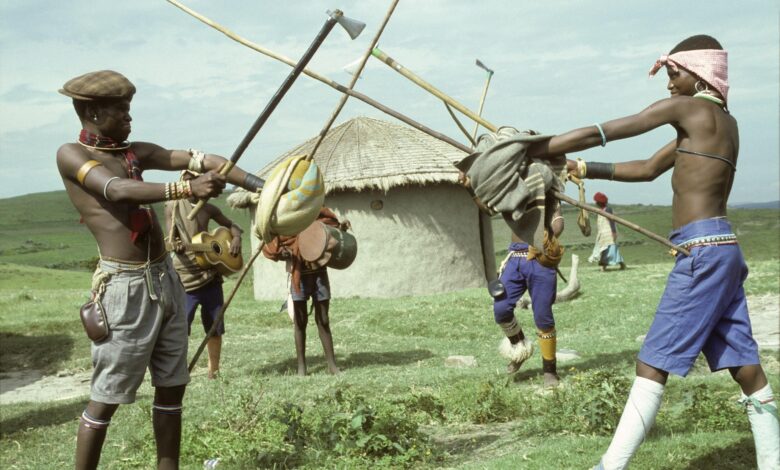20 Things You Should Know About Molamus

1. Cultural Significance: Molamus, or stick fighting, is an integral part of Basotho male culture, symbolizing bravery, strength, and the skills necessary for protection and defense.
2. Traditional Practice: Stick fighting is traditionally practiced by herd boys in Lesotho while tending to livestock in the fields. It serves as both a recreational activity and a means of honing physical skills.
3. The Molamus Sticks: Molamus refers to the sticks used in stick fighting, typically made from locally sourced wood. They are designed to be lightweight yet sturdy enough to withstand the rigors of battle.
4. Adornments: Many Molamus are adorned with colorful telephone wire, reflecting the creativity and craftsmanship of the Basotho people. These intricate decorations not only enhance the aesthetics but also signify personal and cultural identity.
5. Availability: Molamus are sold at various border posts throughout Lesotho, making them easily accessible to both locals and visitors. This has contributed to their growing popularity beyond the country’s borders.
6. Growing Popularity Among Tourists: In recent years, Molamus have attracted the interest of foreign tourists who appreciate their unique designs and cultural significance. Many buy them as souvenirs or decorative items.
7. Skill Development: Stick fighting requires significant skill, agility, and strategy. Participants train rigorously, often engaging in matches that showcase their physical abilities and tactical thinking.
8. Historical Roots: The practice of stick fighting among the Basotho has historical roots, tracing back to ancient traditions where it was used to prepare young men for adulthood and community responsibilities.
9. Community Events: Stick fighting often takes place during community gatherings or cultural events, fostering a sense of camaraderie and competition among participants.
10. Symbol of Masculinity: In Basotho culture, stick fighting is often seen as a rite of passage for young men, symbolizing their transition into adulthood and their readiness to take on responsibilities within the community.
11. Gender Dynamics: While stick fighting is predominantly a male activity, women play a supportive role by encouraging participants and attending events, thus reinforcing communal bonds.
12. Craftsmanship: The creation of Molamus requires skilled artisans who understand the significance of the materials and the art of crafting sticks that are both functional and beautiful.
13. Modern Influence: Contemporary interpretations of Molamus may incorporate modern materials and techniques, blending traditional practices with innovative designs.
14. Preservation of Tradition: Efforts are being made to preserve the tradition of stick fighting and the making of Molamus, ensuring that future generations understand and appreciate their cultural heritage.
15. Social and Emotional Benefits: Participating in stick fighting fosters a sense of belonging and pride among young men, helping to build social networks and emotional resilience.
16. National Identity: Molamus and the practice of stick fighting contribute to the national identity of Lesotho, showcasing the rich cultural heritage of the Basotho people.
17. Competition and Sport: Stick fighting has evolved into a competitive sport, with organized matches held in various regions, attracting spectators and participants alike.
18. Learning and Mentorship: Experienced fighters often take on mentorship roles, teaching younger generations the techniques, strategies, and values associated with stick fighting.
19. Community Building: Events centered around Molamus help strengthen community ties, bringing people together to celebrate culture, skill, and heritage.
20. A Unique Cultural Experience: For visitors to Lesotho, engaging with the tradition of Molamus offers a unique insight into the Basotho way of life, providing an opportunity to learn about their customs and values.
In conclusion, Molamus is more than just a tool for stick fighting; it represents a rich cultural heritage and a vital aspect of community life in Lesotho. As both a sport and a symbol of identity, it continues to thrive, capturing the interest of locals and tourists alike.
Join 'Lesotho News' WhatsApp Channel
Get breaking Lesotho news — delivered directly to your WhatsApp.
CLICK HERE TO JOIN



